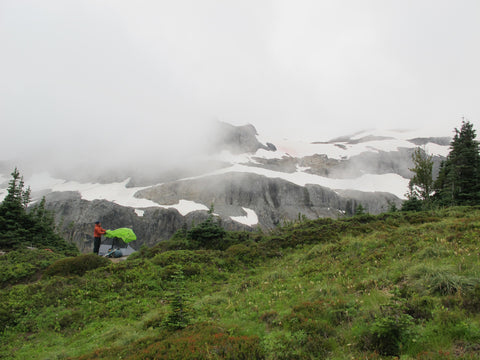The Land & Water Conservation Fund
What is it and Why Should You Care?
Photo: NEMO Equipment
What is the Land & Water Conservation Fund?
Signed into law by Congress 50 years ago last September, the Land & Water Conservation Fund (LWCF) was established to protect the Nation’s natural areas, water resources, and cultural heritage as well as to provide recreational opportunities for all Americans. The program has bi-partisan and popular support.
LWCF:
- Conserves natural areas, wildlife habitat and open spaces including urban parks and larger landscapes.
- Improves access for sportsmen and recreationalists on federal, state, local and private lands & waters.
- Stimulates local economies and jobs supporting tourism and outdoor recreation.
- Preserves wetlands, forests and watersheds ensuring clean and adequate water supplies.
- Builds rural partnerships to keep ranchers and farmers on the land, and promotes sustainable, working forests while maintaining wildlife habitat and open space.
- Protects cultural and historical sites such as civil war battlefields.
- Provides state and local grants to support community parks, trails, access and open spaces.
According to the LWCF website, “Over its 50-year history, LWCF has protected land in every state and supported over 41,000 state and local park projects.” To see how LWCF has impacted your state, click here.

Who pays for this protection?
The beauty of LWCF is, not the tax payer! When the bi-partisan agreement was signed, the idea of funding LWCF was simple: revenue from offshore oil and gas drilling would be taxed and put into this fund. This money would then go to programs creating and protecting national parks, forests, wildlife refuges, and areas around rivers and lakes. Matching grants for state and local parks and recreation, for projects like ball fields, city parks and trails would also be available.
$900 million in royalties are paid into this fund each year by energy companies. Unfortunately, when the fund was signed into law, some key wording was left out - the part about mandating that the $900 million be used exclusively for the intended purposes. As a result, major portions of this $900 million have been re-allocated and earmarked to other sources every year since 1964.
What’s Going on with LWCF Today?
LWCF is set to expire on October 15, 2015 unless Congress acts. In July, a bipartisan energy bill titled Energy Policy Modernization Act of 2015 was drafted and included permanent authorization for LWCF. The bill has since been sent to the full Senate for a vote.

Why Should Veterans Care About LWCF?
Public lands, national parks and rivers provide an outlet for many people, including veterans. Besides providing opportunities to hike, fish, hunt and camp, they’re places that inspire, challenge and oftentimes help clear our minds. In 1948, WWII veteran Earl Shaffer became the first person to hike the entire length of the Appalachian Trail. In his words, he was ‘walking off the war’ and our public lands provide some of the best places to do just that.
You can learn more about the veterans’ connection to LWCF in this Roll Call post.
What Can You Do?
- Sign this petition to voice your support for re-authorizing LWCF
- Contact your Congressman/Congresswoman and urge them to support the re-authorization
- Share your thoughts on social media with these hashtags: #LWCFcreatesJOBS, #Outdoors4All
- Visit this LWCF Action Page for more info.
Follow on Twitter: @LWCFCoalition
Follow on Facebook: www.facebook.com/LandandWaterConservationFund
Article Written by Kate Ketschek
Photos: NEMO Equipment , Kate Ketscheck


